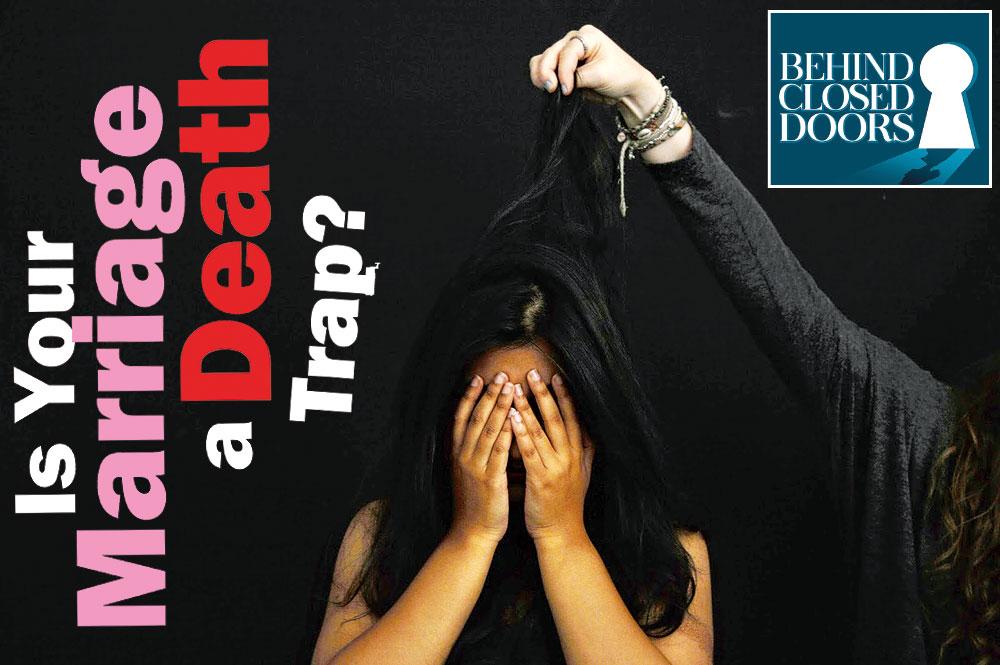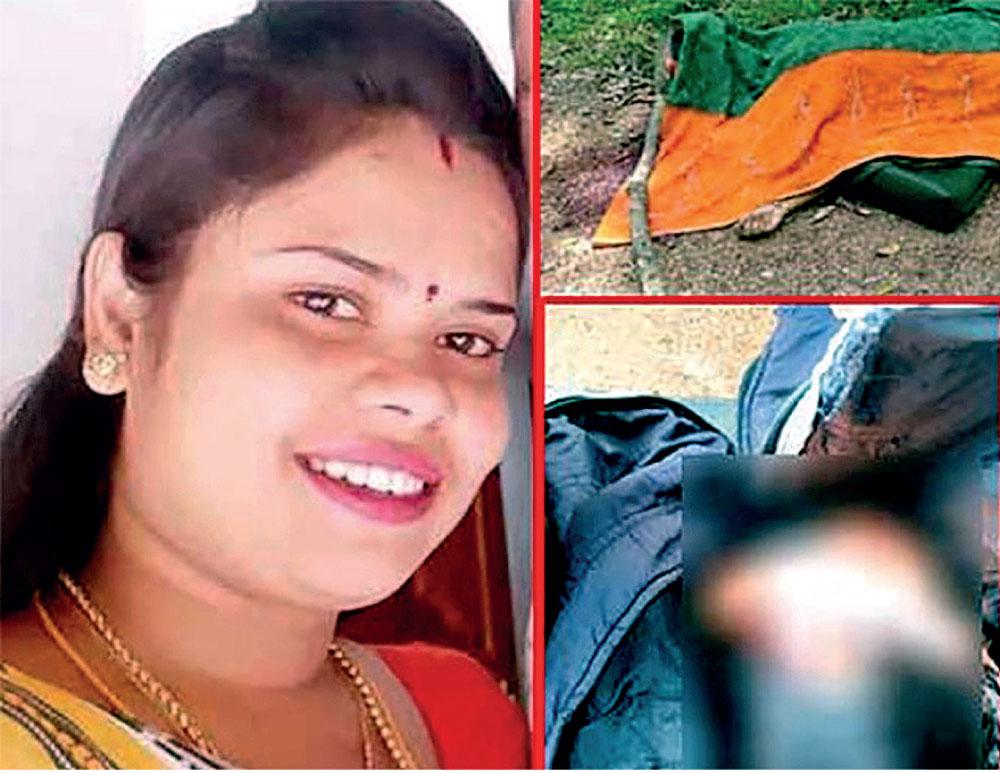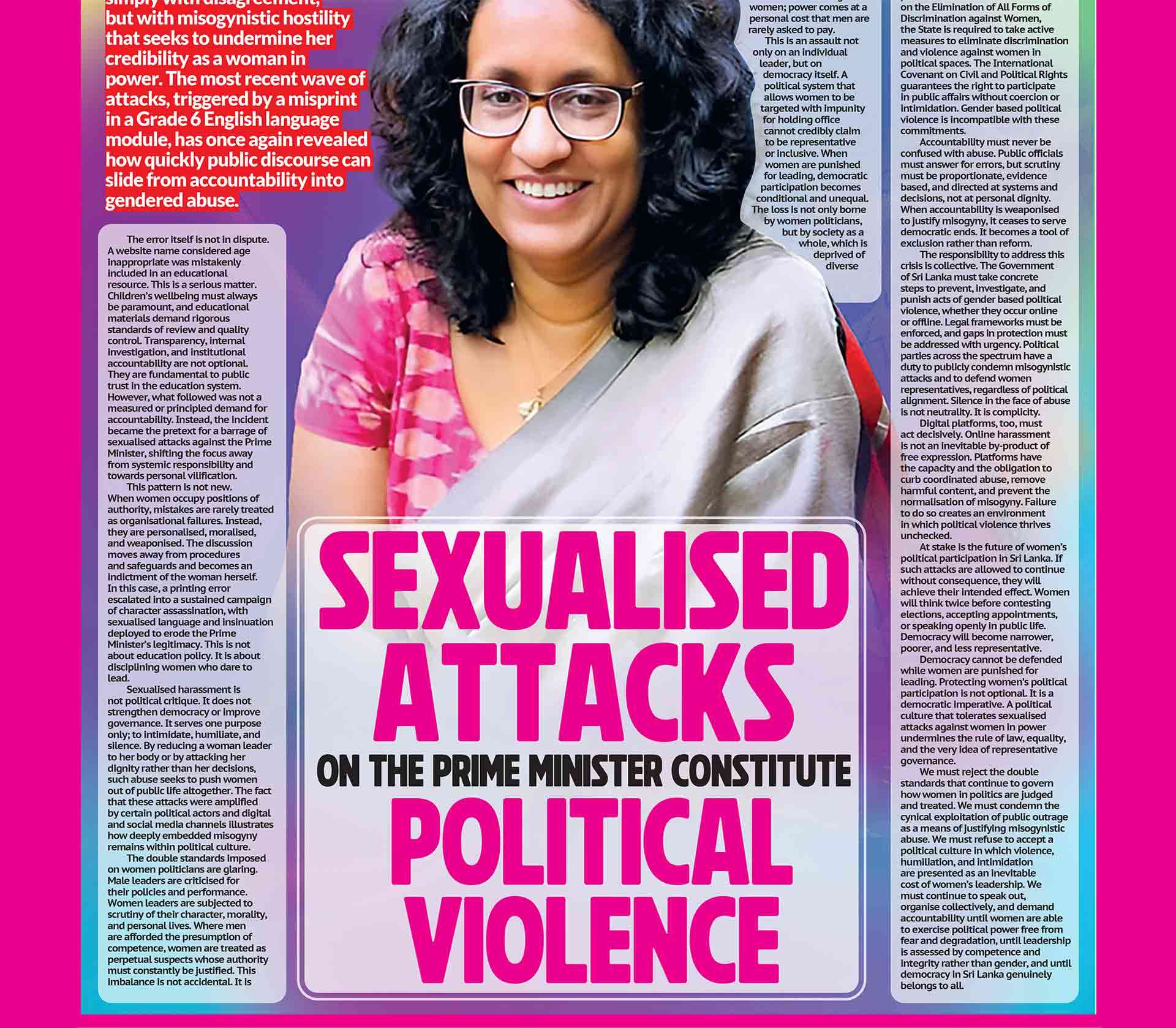
Let me tell you about the most dangerous place for a woman in Sri Lanka today. It's not a dark alley. It's not a war zone. It's her own bedroom. When Sugirtharan Swarnalatha's husband walked into Puliyankulama Police Station carrying her severed head on June 3rd, 2025, the authorities called it a "family dispute." A pregnant teacher was decapitated by the man who promised to love and protect her, and we're calling it a domestic disagreement. This isn't just linguistic cowardice; it's willful blindness to an epidemic that's hiding in plain sight.
01
The Numbers Don't Lie (But We Do)
Here's what the research actually tells us: In 36% of female homicides, the killer was the husband, boyfriend, or ex-partner. Another 21% were killed by blood relatives. Do the math and that's 57% of murdered women killed by someone who was supposed to love them. Your marriage certificate isn't a shield; for many women, it's a death warrant signed in advance.
The UNFPA study on unnatural female deaths reveals something even more chilling: 8% of murdered women had already reported intimate partner violence to police at least once. Some had reported it more than three times. These women literally begged the system for help and still ended up dead. The system didn't just fail them – it participated in their murders through negligence.
02
The Slow-Motion Murder Most People Call Marriage
Let's talk about what really goes on behind those closed doors everyone pretends are sacred. The Colombo hospital study of 116 wife-battering cases shows that 87% of these women faced repeated violence, with 59% enduring more than 10 separate incidents of abuse. Think about that for a second. More than 10 times. That's not a man "losing his temper", that's systematic torture with a marriage license. The injury patterns tell the real story: 60% had head injuries, 73% were beaten with clubs, bed poles, firewood, and broomsticks. 9% were strangled. One woman had a wooden pole inserted into her vagina by her husband. But we call these "non-grievous injuries" because our legal system was apparently designed by people who've never been on the receiving end of "non-grievous" violence.
03
The Pregnancy Paradox Nobody Discusses
Here's something that'll make your skin crawl: pregnancy doesn't protect women from violence, it often escalates it. Swarnalatha was pregnant when her husband decided decapitation was the solution to their "disputes." Why? Because pregnancy represents a loss of control for abusive men. It's a woman's body doing something he can't dominate, a future he can't fully control, resources that won't be exclusively his. For men whose entire relationship strategy is based on power and control, pregnancy becomes a threat to be eliminated.
But we don't talk about this, do we? Instead, we perpetuate the myth that pregnancy makes women untouchable, sacred, protected. Tell that to the pregnant women getting beaten to death by their husbands.
04
The Alcohol Excuse That Enables Murder
Let's address the elephant in the room: 69% of abusive husbands in the study consumed alcohol regularly. But here's what pisses me off about how we discuss this, we treat alcohol like it's the cause instead of the excuse. Alcohol doesn't create domestic violence; it reveals it. Millions of men drink without beating their wives. The ones who do aren't victims of addiction, they're predators who use intoxication as permission to do what they already wanted to do. When we blame alcohol, we let the real culprit off the hook: the deliberate choice to use violence as a tool of control.

05
The Justice System's Sick Comedy
Want to know why women don't report? Sri Lanka's court system takes 6½ to 10 years to conclude criminal cases. There are over 725,000 pending cases. If Swarnalatha had reported domestic violence in 2020, her case might have been heard in 2030, five years after her actual murder. This isn't incompetence; it's institutional complicity. The system is designed to exhaust victims, not protect them. By the time justice arrives, there's nobody left to receive it except the families picking up the pieces.
06
The Language of Looking Away
We've weaponized euphemisms to avoid confronting reality. "Sharp force trauma" instead of "hacked to death." "Intimate partner violence" instead of "beaten by the man who shares her bed." "Family dispute" instead of "terror campaign conducted by a domestic terrorist." This sanitized language serves one purpose: to make us feel better about doing nothing. When we call it "domestic violence," it sounds like a private matter. When we call it what it is, terrorism conducted by men against women they claim to love, suddenly it becomes everyone's problem.

07
What Actually Needs to Change (And Why It Won't)
Here's the brutal truth: we know exactly what needs to change. We need:
- Immediate protection orders that actually protect, enforced by cops who take domestic violence seriously
- Economic independence programs that give women real alternatives to deadly marriages
- Court systems that move faster than continental drift
- Cultural transformation that stops treating women as male property
- Zero tolerance policies for violence in relationships
But we won't implement these changes because they require admitting that our entire social structure is built on male dominance and female subjugation. It requires acknowledging that marriage, as currently practiced, is often a system of legalized ownership rather than partnership.
08
The Surrender Spectacle
The Puliyankulama killer's decision to surrender with the severed head wasn't remorse, it was the ultimate power move. He ensured that his wife's death would be remembered not for who she was (a teacher, a woman carrying new life) but for the grotesque theater of his final act of control. This reveals something crucial about domestic violence that we refuse to acknowledge it's rarely about anger or mental illness. It's about power, control, and humiliation. It's about men who've decided that women exist for their convenience and elimination is preferable to independence.
09
The Truths We Whisper, But Never Shout!
Here's what happens behind closed doors that nobody wants to discuss in polite society:
- The escalation is always predictable. It starts with emotional abuse, progresses to physical control, and often ends in murder. Every woman killed by her partner had a trail of increasingly serious incidents that everyone chose to ignore.
- The system protects men, not women. When a woman reports domestic violence, she's asked what she did to provoke it. When she's murdered, we wonder why she didn't leave. The system is designed to blame victims and excuse perpetrators.
- Extended families often enable the violence. In-laws who turn blind eyes, parents who tell daughters to "make it work," communities that treat wife-beating as a private matter, they're all accessories to murder.
- Economic dependence is weaponized. Men deliberately isolate women financially, making escape impossible. Then we blame women for "choosing" to stay in deadly situations.
- The children are watching. The study shows children witnessing their mothers being systematically destroyed. We're raising the next generation of victims and perpetrators while pretending this is normal family dysfunction.
10
The Questions We're Too Cowardly to Ask
Why do we treat domestic violence as a women's issue instead of a men's violence problem? Why do we ask, "Why didn't she leave?" instead of "Why did he think he had the right to hurt her?" Why do we treat the home as a sacred space exempt from the laws that govern everywhere else? Most importantly: why do we act surprised when men who've been taught their entire lives that women exist for their pleasure and convenience resort to violence when women assert independence?
The Bottom Line
Sugirtharan Swarnalatha didn't die from a "family dispute." She died because she was married to a man who believed he owned her life and death. She died because we've created a system where men's violence is treated as women's problem to solve. She died because we'd rather maintain comfortable lies than confront uncomfortable truths. Every day in Sri Lanka, women are calculating whether their marriages will kill them. They're measuring their words, monitoring their movements, managing their husbands' emotions like bomb disposal experts defusing live explosives. This isn't marriage, it's captivity with legal documentation. The severed head in Puliyankulama isn't an aberration, it's the logical conclusion of a system that treats women's lives as disposable. Until we're willing to confront the reality that marriage can be a death trap, until we're ready to hold men accountable for their violence instead of making excuses for it, women will keep dying in their own homes at the hands of men who promised to love them. The question isn't whether your marriage could kill you. The question is whether we're finally ready to do something about the ones that do.











